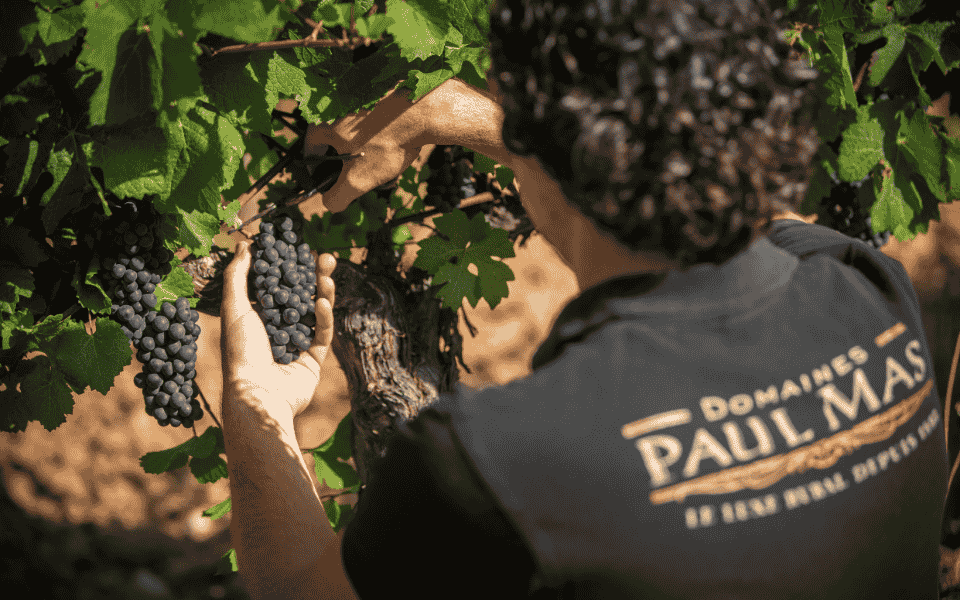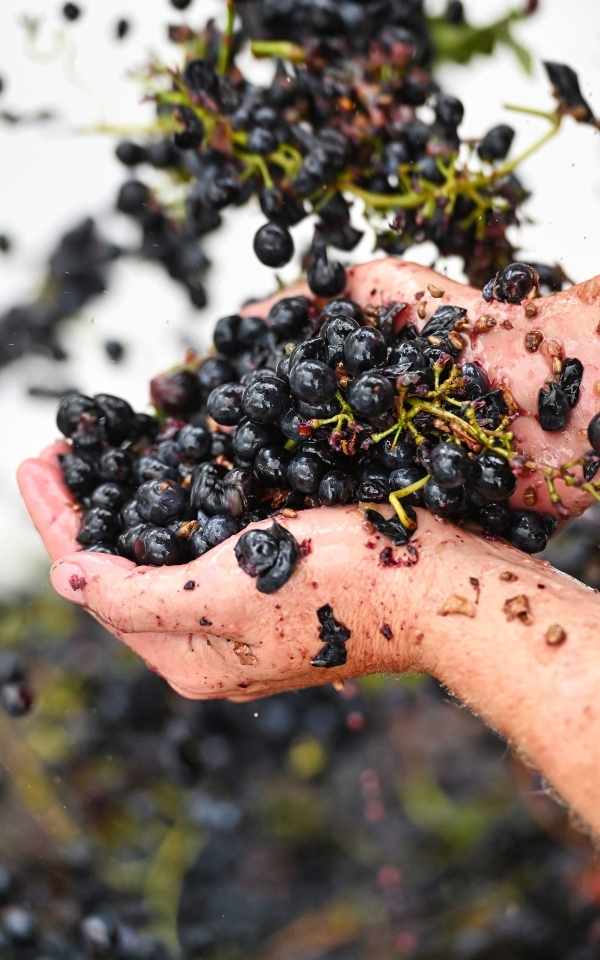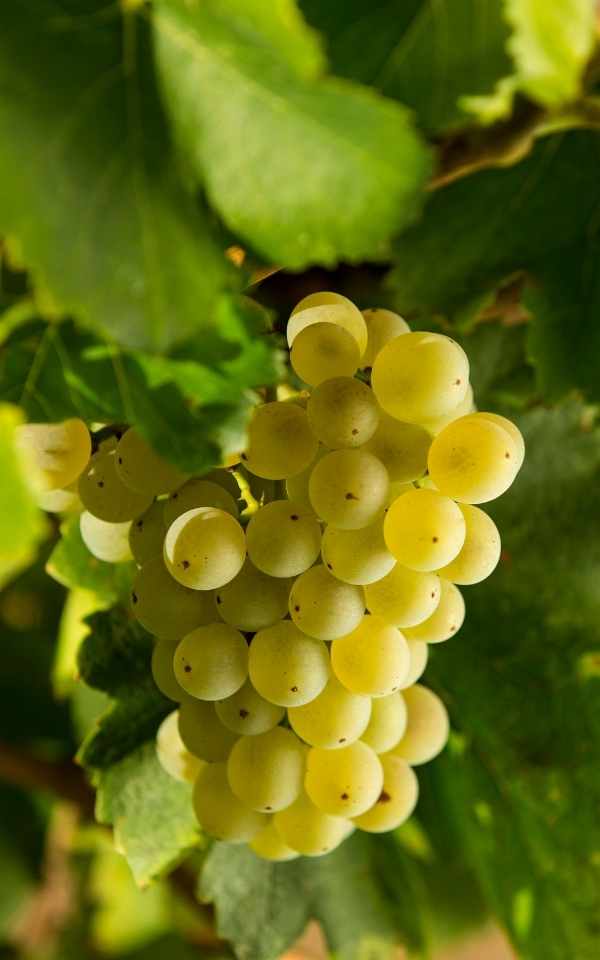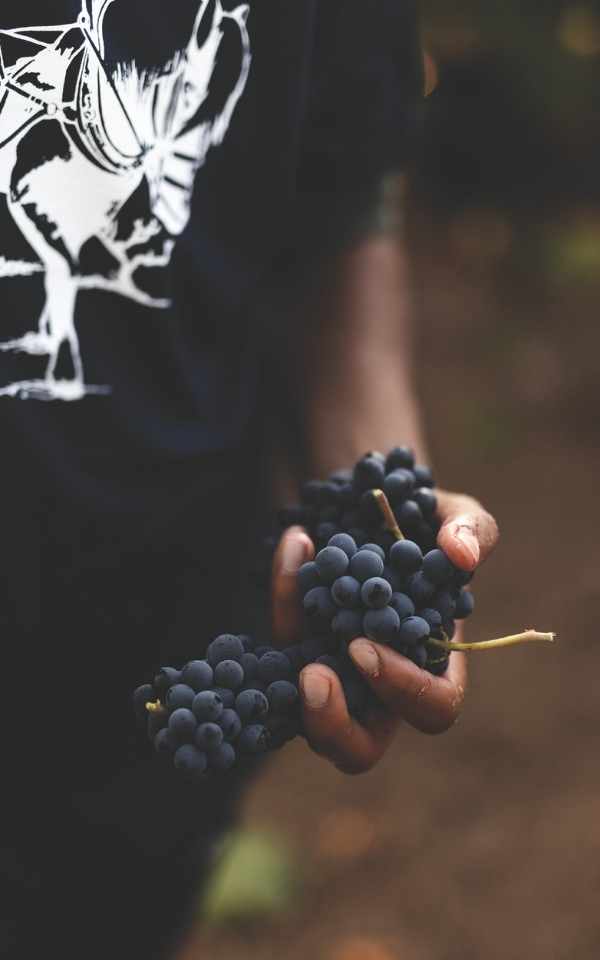2024 Vintage: A year on the edge

The 2024 vintage was marked by challenging weather conditions, including hail, late frosts, and a rainy spring, leading to varied yields across the Domaines Paul Mas terroirs. Although production fell below expectations in much of the vineyard, certain Languedoc terroirs and grape varieties demonstrated remarkable resilience. In the face of these challenges, the teams applied their expertise to ensure optimal grape quality and to uphold Jean-Claude Mas’s distinctive style in the cellar, with no compromise on wine quality.
CHALLENGING WEATHER CONDITIONS LEAD TO VARYING YIELDS
From Gard to Pyrénées-Orientales, spanning Hérault and Aude, the vineyards of Domaine Paul Mas faced diverse climatic challenges with varied impacts. Although overall yields are similar to last year, distinct disparities are evident across grape varieties and terroirs.
At Château Oustau Saint-André in Costières de Nîmes, over 600 mm of rain fell in the spring, accompanied by cold weather during flowering. These conditions led to early mildew onset, resulting in an average 30% reduction in the harvest, affecting all grape varieties. In Hérault, near Montagnac, the vines also experienced heavy rainfall starting in May, following a very dry winter.
In this region, Domaine Silène des Peyrals highlighted the resilience of its stony soils, which drain well and withstand excess moisture better. However, intense August heat stalled grape ripening. At Château des Crès Ricards, after a dry winter followed by spring rains, Merlot and Grenache were affected by fruit set issues, further reducing yields.
Du Gard aux Pyrénées-Orientales, en passant par l’Hérault et l’Aude, les vignobles du Domaine Paul Mas ont été confrontés aux aléas climatiques avec des conséquences variées. Bien que les rendements globaux soient similaires à ceux de l’an passé, des disparités marquées apparaissent selon les cépages et les terroirs.
Au Château Oustau Saint-André, en Costières de Nîmes, plus de 600 mm de pluie sont tombés au printemps, accompagnés de froid pendant la floraison. Ces conditions ont favorisé l’apparition précoce du mildiou, entraînant une baisse moyenne de 30 % de la récolte, impactant tous les cépages. Dans l’Hérault, près de Montagnac, les vignes ont aussi reçu des précipitations abondantes dès mai, après un hiver très sec.
Dans cette région, le domaine Silène des Peyrals a montré la valeur de ses sols caillouteux, qui drainent bien l’eau et résistent mieux aux excès d’humidité. Cependant, la chaleur intense d’août a bloqué la maturation des raisins. Au Château des Crès Ricards, après un hiver aride suivi de pluies printanières, les merlots et grenaches ont été touchés par la coulure, réduisant les rendements.

Further west, the Aude region was not spared. At Château Jérémie, an August hailstorm devastated 90% of the crop over 70 hectares. Between Corbières and Minervois, water scarcity complicated the season for the vines. Thanks to an innovative irrigation and drainage system, the 154 hectares of Domaine de la Ferrandière, located in the Marseillette pond area, withstood the conditions better, though yields remain historically low at under 7 tons per hectare.
At Château Martinolles near Limoux, a combination of rain and cold during flowering led to significant fruit set issues on Merlot and uneven grape development (millerandage) across all varieties, reducing yields by 35%.
Finally, in the Pyrénées-Orientales, Château Lauriga reports this as the leanest vintage in 20 years, with volumes down by 70%, largely due to persistent drought. Currently, part of the estate is irrigated, and an irrigation project is underway to support the vines on these arid lands, ensuring a more sustainable approach to managing this historic property.

A VINTAGE DEMANDING VIGILANCE AND VITICULTURAL EXPERTISE TO ENSURE UNDENIABLE QUALITY
In response to this capricious vintage, the teams at Domaines Paul Mas demonstrated unwavering determination and exceptional adaptability. Their efforts have paid off, as the grapes arriving at the cellar already promise wines with remarkable balance. In the vineyard, beyond the numerous treatments to protect the plants from fungal diseases, soil work was essential to encourage deep rooting, enabling the vines to access water and mineral salts.
At Château Jérémie, where the vines were tilled six times, “the vegetation is still in good condition despite the drought, a critical point for the plant’s reserves for next year,” noted estate manager José Ramos Dos Santos in early October. Patience was also essential to harvest at full maturity. At Château des Crès Ricards, harvest began on August 30 and was spread out over an extended period. Nestled between the Hérault River and the Lergue River, the estate’s older vines benefit from deeper, pebble-rich soils. Both the Merlot and Grenache varieties are impressive, harvested at 14.5% potential alcohol and exuding strawberry aromas, showcasing a beautiful balance.
Summary from Guillaume Bonnet: “While the effects of rain—whether it leads to concentration or dilution—aren’t always predictable, this vintage has proven to be high quality. Phenolic ripeness was achieved across all grape varieties.”
A PROMISING VINTAGE
Overall, the team praises the high quality of the harvest and the very encouraging juice now in the cellar. With his comprehensive perspective, Bastien Lalauze, head of development and improvement for all the vineyards at Domaines Paul Mas, observes “a promising vintage in terms of aromas and acid balance, following several very hot vintages.” Among the tastings, he particularly appreciated the Viognier and the Chardonnay, both smooth and round, from Château Oustau Saint-André. These were vinified for the first time in the property’s brand-new cellar, specifically designed to handle the entire harvest. The facility includes concrete tanks for reds and stainless steel for whites, and will soon be complemented by a 150m² aging cellar equipped with conical wooden vats for aging reds and fermenting certain whites.
At Domaine de la Ferrandière, José Ramos Dos Santos also predicts “a good vintage.” The white grapes, which make up 62% of production, “were all harvested at the desired degrees.” Bastien Lalauze lauds the Sauvignon grapes planted in the Marseillette pond area: “without excessive exuberance, they reveal an explosive aromatic palette of citrus and exotic fruits.” The reds, meanwhile, are concentrated, as the vines here have fully benefited from their terroir: the depression of the former pond encourages significant temperature variations, both between the slopes and the lowlands and between day and night.
At Château Martinolles, patience was also key to harvesting grapes at peak ripeness. This goal was achieved on October 4, when the last parcel of Cabernet Sauvignon was picked at an approximate potential alcohol level of 14.5% by volume. Finally, at Château Lauriga, phenolic ripeness was similarly spread out. Harvesting began on August 18 and concluded on September 23. Like his colleagues, Jules Trabis foresees great things for the 2024 vintage: “The grapes harvested were healthy and of high quality, with concentrated berries. Everything is excellent!”

